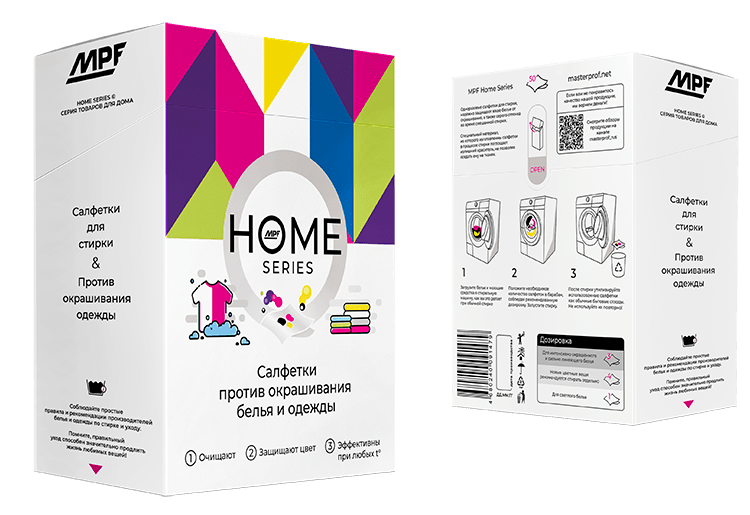Heating radiator is a heating device consisting of separate elements – sections, with internal channels, inside which the heat transfer fluid circulates.
Heating radiator section – the smallest structural element of a heating radiator. It is usually made of cast iron or aluminum, or steel.
Radiator sections are connected to each other into radiators with special radiator nipples. The more sections in the radiator, the more heat can be obtained and consequently, the larger the possible heated area of the radiator. It should be taken into account that the thermal capacity of one section of a cast iron radiator is on average from 80 to 160 watts, and for bimetallic this parameter corresponds to about 200 watts.
The radiator is connected to the system using special fittings (adapters). Superfluous holes are closed with plugs and as a rule a manual air vent (bleed screw) is installed on one of the unused upper holes.
For quality assembly and installation of the radiator you need a special tool – wrench or key.
Wrenches and keys for heating radiators are different, some of them are designed for assembling individual sections into radiators, others are needed for screwing in adapters and plugs. Also in this group can be attributed a special product for air discharge from the bleed screw, which is called the bleed screw key. In this article we will try to break down the main varieties of wrenches and keys used for radiator installation and consider how each of them works.
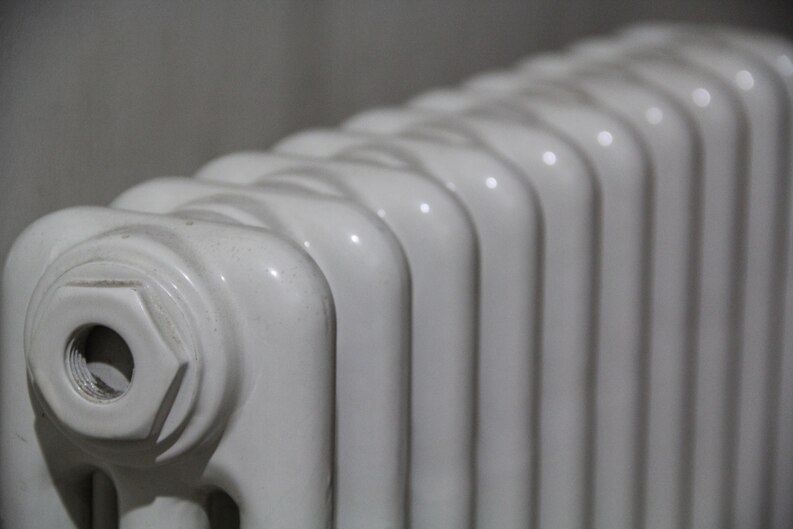
Understanding radiator wrenches and keys
Today, a wide variety of tools for assembling and installing radiators can be found on sale, each of which performs a specific function. However, if you consider such a group as keys for plugs and adapters radiators, you can see that many manufacturers are trying to make these keys universal by combining in them the most commonly used sizes of plugs and adapters, and on sale you can find models in which, in addition to the standard hexagonal picks are built in and a key for manual air vent (bleed screw).
So, let's take a closer look at each option.
Wrench for assembling radiator sections.
This key is usually two steel bars 800 mm. and 400 mm. long and 16mm thick, welded in the form of a 'T'. The working part of the key, which is either a small steel plate or a hexagon, is welded to the free end of the long bar. This key is inserted inside the radiator sections and allows the radiator nipples to be tightened / loosened from the inside. The user simply inserts the key to the required depth inside the radiator, makes sure that the key engages with the nipple and then assembles/disassembles the sections. This allows you to either add additional sections or remove unnecessary sections.
Such collapsible keys can be self-made, but it is important to consider the dimensions of the key (the length and thickness of the steel bars should be sufficient for its use without deformation), the size and type of the working part, and the quality of the welding work (welding should be done by an experienced welder to avoid breaking the key inside the radiator).
As for the dimensions of the working part of the key (plate), for modern bimetallic or aluminum radiators, the standard internal diameter of the nipple is 25 mm with an external thread size of 1 inch, in this case the size of the tip should correspond to a length of 3 cm, a width of 2.3 cm, and a thickness of 0.6 cm. Cast iron radiators have nipples with 5/4 inch thread, which implies a working part with a length of 3 cm, a width of 2.5 cm and a thickness of 0.8 cm. It is worth noting that in addition to the simple models of keys described above have a combined design in the form of a 'ratchet' or herringbone with different sizes of the working part, in particular, 3/8, 1/2, 3/4, 1 and 5/4 inches.
Radiator plug wrench is a tool specially designed for installing bimetallic and aluminum heating radiators. With its help you can quickly, efficiently and most importantly delicately screw and unscrew adapters and plugs (as a rule, adapters and plugs are covered with paint and if you use conventional wrenches to install them, the surface of the fittings may scratch). Often such wrenches are made of non-metallic polymeric materials (nylon, polypropylene), which in contact with fittings do not scratch their coating and allow to facilitate the process of work.
Key for manual air vent, also known as bleed screw key and is a small product with a square hole for the valve and two lugs for easy rotation, the direct purpose of which is to open the special drain hole of the bleed screw valve and drain the air from the heating system. This is done both after the radiator is installed in the system in order to fill all the radiator cavities with water, and in cases when due to an air lock the radiator does not heat up after the heat transfer fluid is supplied to it. The key can be made of either polymers or metal.
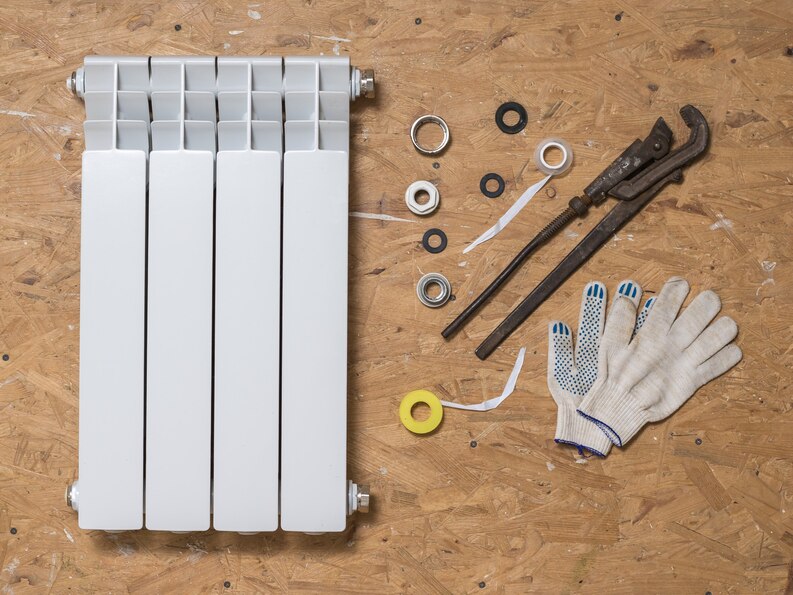
Manufacturer of heating radiator keys and wrenches
The MasterProf company is a reliable manufacturer and supplier of plumbing products, having extensive experience in the market. For more than 10 years of activity, we have created a wide network of partners, which allowed us to supply our products to all cities in Russia and CIS countries, among the many representatives of DIY networks with whom we cooperate, we can highlight Leroy Merlin, Castorama, OBI, Maxidom, Petrovich, Baucenter, Akson and others.
Just recently, as a result of the active work of our team, a new universal reinforced wrench for radiator plugs and adapters has been designed and manufactured for quick and delicate installation of radiator fittings. The product is made in red color and is made of durable material that does not spoil the enameled surface of bimetallic and aluminum radiators.
The distinctive advantages of the radiator wrench produced by MasterProf include the following points:
- The unique ergonomic shape of the wrench allows for convenient use during installation, as it is designed specifically with the intended application in mind;
- The key is universal due to the presence in its design of all the necessary dimensions for mounting the radiator, and in addition to this product has a separate head for manual air vent bleed screw valve;
- The reinforced wrench is so due to the fact that as a material of manufacture was chosen heavy-duty polyamide, characterized by increased wear resistance and durability, as well as immunity to mechanical stress – the thread does not break for a long time;
- Although the material is tough, it is not dangerous to work with delicate coatings, so it does not leave any scratches or marks on the surface of adapters and plugs;
- Radiator key is designed by engineers in the city of St. Petersburg specifically for the needs of our fellow citizens.
At the moment there are two varieties of this key to choose from – a reinforced key made in bright red color from heavy-duty polyamide, as well as an inexpensive version – a key made from ordinary polyamide in white or beige color. Both types have been tested in real operating conditions and have shown themselves perfectly in the process of installation of radiator fittings, and the strength qualities of even the ECONOMY version are superior to the majority of analogs on the market.
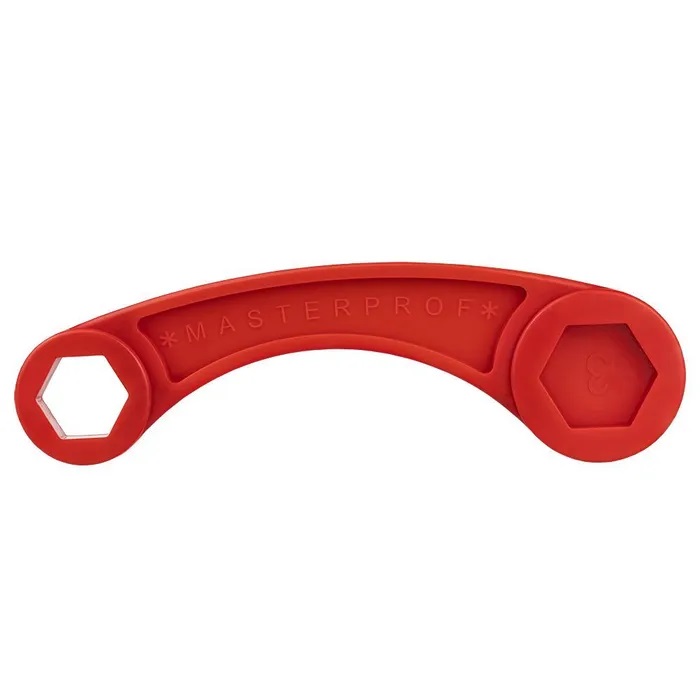
Why radiator keys are important for heating efficiency
Usually, when designing and constructing buildings, the required heat output for space heating is calculated based on the floor area. It should be taken into account that the average thermal capacity of one section of a cast iron radiator is from 80 to 160 watts, and for bimetallic – about 200 watts. Further calculation of optimal parameters of radiators for rooms with ceiling height more than 2.6 meters is carried out by volume. According to the established norms, heating one cubic meter of a residential building requires:
- 41 watts for a panel house;
- 34 watts for a brick house.
Thus you can calculate how many bimetallic sections are required to make up the radiator, installed in the room of a brick house if the area of the room is 10 square meters, and the height of the ceilings 2.5 meters
- First, let's calculate how much heat is needed to heat the room: 34 watts x 25 cubic meters = 850 watts – the amount of heat required to heat the room
- Based on the heat output of one 200 Watt section, we calculate the required number of sections: 850W / 200Watt = 4.25 (5) sections.
It turns out that to effectively heat the room requires a radiator consisting of 5 sections (we can not install a quarter section, so we round up to a whole number)
Since it is not always possible to find heating radiators with the required number of sections when installing radiators, specialists often have to either add sections or, on the contrary, remove the extra ones. On this basis, the importance of radiator wrenches and keys for heating systems is due to the fact that without them, you will not be able to do the necessary work. They are extremely specialized and it is not always possible to replace them with one tool or another.
A good example is radiator plug and adapter wrenches, which are designed to fit the fittings needed to connect the radiator to the heating system. These wrenches, unlike many plumbing tools, are made of polymers (nylon, polypropylene). The choice of material is conditioned by the fact that during the installation of adapters must be installed very carefully, trying not to damage the protective coating (if you use an ordinary adjustable wrench or gas wrench, there is a high probability of damage to the protective coating). Defects on the fittings do not pass without a trace and because of them reduce the performance of the components of the heating system as a whole, so during the work it is important to use a good wrench, not improvised means.
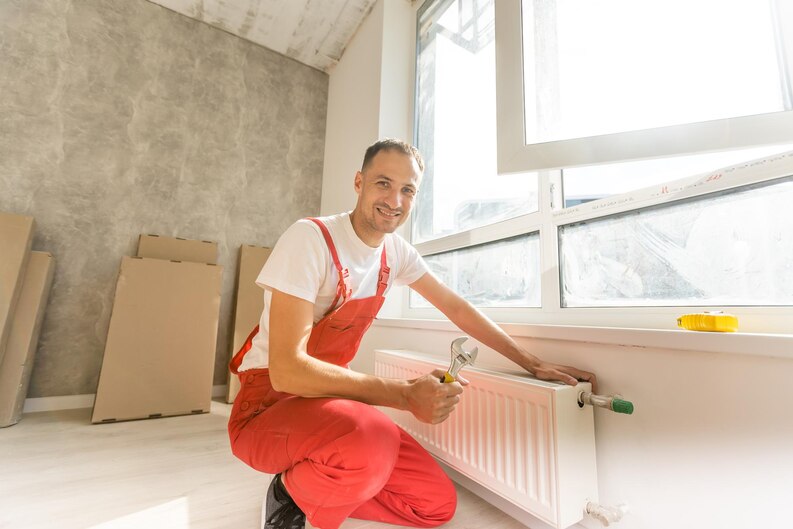
Step-by-step guide to using a radiator wrench
Installation of fittings on the radiator is accompanied by the use of a radiator wrench, which serves as the main tool for tightening adapters, bleed screws and plugs. Let's break down this process in more detail:
- Preliminary degrease the threads, if the fitting used is not new – use alcohol and a soft cloth;
- For better sealing, anaerobic gel can be used and applied in a small layer around the entire circumference of the adapter threads;
- Screw the adapter into the radiator first by hand and then use a radiator wrench to tighten the connection, but do not over tighten. Install the remaining adapters in the same manner;
- Proceed to the installation of the thermostatic regulating fitting – mount it also using sealant in the upper part of the radiator at the inlet, and then tighten it with a wrench;
- Install the plug over the fitting by hand, then tighten it with a radiator wrench;
- Let's move to the radiator outlet and install using sealant part of the collapsible joint, which is screwed in by hand and also tightened with a tool;
- In the upper part of the outlet side, mount the bleed screw, for which we select a square JAW radiator wrench and tighten the connection;
- Install the fitting on the pipe – first apply gel to the threads of the water inlet pipe and screw the thermostatic head in so that it faces our direction;
- Excess gel is transferred to the threads of the water outlet pipe and spread a thin layer, after which a straight shut-off valve is installed, the position of which can be either horizontal or vertical;
- Hang the radiator on the prepared brackets and connect it to the incoming and outgoing pipes using the pre-installed collapsible connections – screw them in by hand, then use a tool and tighten the connections by one quarter;
- Install the thermal head on the radiator inlet and thereby complete the radiator installation. After 15 minutes of waiting we fill the heating system with heat transfer fluid and check it with test pressure – if there is no leakage, after 40 minutes it is possible to supply working nominal pressure up to 10 atmospheres, and after 24 hours – up to 40 atmospheres.
When using a radiator plug wrench, it is important not to hurry and first align the opening of the wrench with the adapter or plug, and then make efforts to unscrew or screw it in – incorrect alignment leads to damage to the surface enamel of fittings and may affect its corrosion resistance and structural properties.
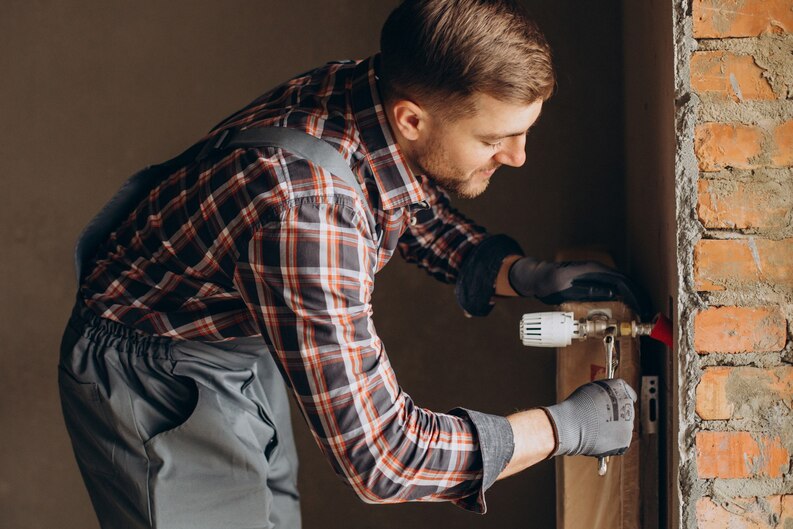
Troubleshooting
Even the most reliable and properly installed aluminum and bimetallic radiators can fail over time or lose their original efficiency, but this is no reason to throw out the device and make a replacement – often the problem can be solved by repair, having previously diagnosed the cause of the problem. All radiator repair work is carried out in its dismantled state, so it is important to drain the water in advance, prepare tools and cover the floor with a rag to avoid the spread of liquid.
The dismantled battery should be inspected in detail for damage – for example, one of the most common faults is leakage, in which case the gaskets and their condition should be inspected first. Another problem is water hammer in the system, after which the section will have to be replaced. Usually the damaged section is replaced with a new one, but if it is impossible to purchase it, you can simply remove the non-functioning one and install the radiator back – the heating will not go anywhere, but the average temperature in the room will drop. Small leaks can be fixed with cold welding, which will be the best option as a temporary solution, while larger leaks are soldered with a special solder appropriate for the type of radiator you have.
For cast iron radiators, the actual problem is damage to the surface layer of paint, as it is a protective layer and barrier that prevents the development of rust, which significantly deteriorates the performance of the radiator and over time the battery may fail. In general, the problem of corrosion is a very common phenomenon for heating devices, so if in the process of disassembly you found significant clogging with rust, it is best to buy a new radiator, because in the very near future it can leak in any weakened place.
Conclusion
There are three main types of radiator wrenches, which are indispensable tools for working with heating systems – a wrench for disassembly and assembly of sections, a tool for adapters and plugs, as well as a wrench for the Maevsky valve. Each of them has its own function and serves not only to eliminate certain faults, but also to simplify and speed up repair and installation works.

